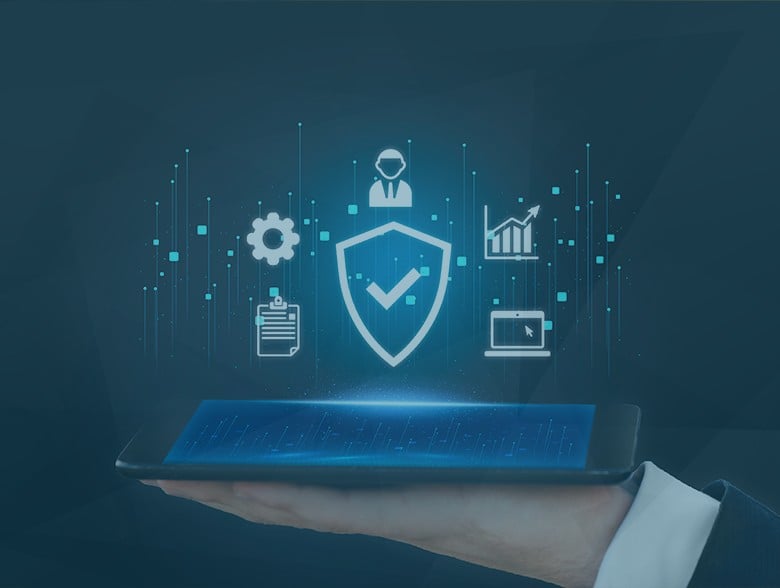The global cybersecurity workforce has reached a record 4.7 million people in 2022, according to the (ISC)2 2022 workforce study. However, despite this significant growth, the study also revealed that the sector still needs an additional 3.4 million security professionals, representing an increase of over 26% from the previous year. With the ever-rising frequency and complexity of cyberattacks, organizations are now facing greater risks than ever before.
To address this workforce shortage and combat the increasing threat landscape, organizations are turning to artificial intelligence (AI) as a potential solution. AI has gained popularity as a labor-saving technology and its ability to reduce manual efforts in various industries, including cybersecurity. Leveraging AI in detection and response platforms can not only improve the speed and accuracy of threat detection but also alleviate the burden on human analysts.
One of the key advantages of AI-driven cybersecurity platforms is their ability to quickly analyze massive amounts of data. Traditional methods often struggle to keep up with the deluge of data produced by modern systems, but AI algorithms can process this information much faster and identify threats in real time. By reducing the dwell time of hackers within a network, AI can significantly decrease the chances of a successful attack.
Moreover, AI-powered cybersecurity platforms can automate threat detection and response, allowing human analysts to focus on more complex tasks. Basic attacks, such as phishing emails and malware, can be automatically detected and mitigated, freeing analysts to investigate and respond to more sophisticated, human-operated attacks.
Additionally, AI technology can analyze user behavior patterns and detect anomalous activities that could indicate a threat. Advanced User and Entity Behavior Analytics (UEBA) leverage machine learning algorithms to monitor user behavior in real time, using a baseline understanding of normal user activity. This enables organizations to identify potential insider threats or unauthorized activities more effectively.
Furthermore, recent advancements in AI’s natural language processing capabilities have made cybersecurity platforms much more user-friendly. Users can now interact with the platform using natural language, making it easier to access information, ask questions, and perform actions. This not only improves the user experience but also addresses the shortage of skilled cybersecurity analysts by enabling the use of lower-skilled individuals who are more readily available and cost-effective.
In addition to these benefits, AI also offers predictive analytics capabilities, allowing organizations to prepare for future threats and develop proactive cybersecurity strategies. By identifying patterns and trends in cyber threats, AI can help organizations predict and prevent future attacks before they occur.
However, the use of AI in cybersecurity platforms also presents its own set of challenges and risks. One significant challenge is the lack of understanding among organizations about how AI works and how it can be effectively implemented. To fully leverage AI’s potential, organizations must invest in education and training to understand its capabilities and limitations.
Another challenge is the lack of trust in AI-based detections. Some organizations may be reluctant to fully trust the results generated by AI algorithms, which can limit the benefits they can derive from the technology. To overcome this, risk managers should thoroughly understand how AI arrives at its conclusions and ensure that any baseline profiling is done using the organization’s own data.
Complacency is another risk associated with AI-powered cybersecurity platforms. Organizations may develop a false sense of security, believing that AI can completely replace human analysts. However, it is essential to periodically cross-check AI-generated results to ensure their accuracy and avoid complacency.
Furthermore, the quality of AI models heavily relies on the data used to train them. If the training data is biased or incomplete, it can lead to inaccurate threat detection and response. Organizations must be aware of potential ethical issues, such as bias and fairness, in AI models and take steps to address them.
Lastly, AI systems themselves can become targets for cyberattacks. Attackers may attempt to exploit vulnerabilities in AI models to evade detection or manipulate the system. Organizations must prioritize the security of their AI systems to prevent such attacks.
Despite these challenges and risks, the benefits of using AI in cybersecurity are significant. Organizations that invest in AI-driven cybersecurity platforms can improve their security postures, reduce the risk of successful cyberattacks, and save on analyst personnel costs.
Aimei Wei, Co-Founder and Chief Technology Officer of Stellar Cyber, is a seasoned professional with over 20 years of experience in data networking and telecommunications. She has worked for both early-stage startups and established companies, gaining expertise in building successful products and leading teams in the industry. Aimei holds a Master of Science in Computer Science from Queen’s University and an undergraduate degree in Computer Science from Tsinghua University.
For further information, Aimei Wei can be reached at [email protected] or on the company’s website at https://stellarcyber.ai.


